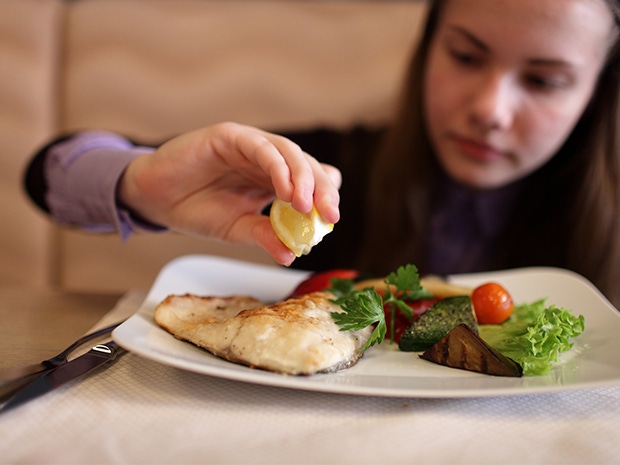How to menu seafood dishes kids will eatHow to menu seafood dishes kids will eat
Tasty meals make K-12 students seafood customers for life. School lunches are a staple of American education. But over the last several years, school meals have gotten a makeover to make them fresher, healthier and tastier.
April 16, 2018

School lunches are a staple of American education. But over the last several years, school meals have gotten a makeover to make them fresher, healthier and tastier.
One item making a splash on K-12 lunch menus is seafood. The USDA Dietary Guidelines recommends that Americans, including children, consume at least two seafood meals a week of at least 4-ounces of cooked seafood. Almost 80% to 90% of Americans, however, are not getting enough seafood in their diets.
But many students may be reluctant to eat seafood, since it’s often less familiar than other proteins. So how can operators get picky eaters, like children, to eat more seafood?
How to serve kid-friendly seafood
The number one consideration operators have when planning and executing a menu for K-12 diners is kid-friendliness, according to Technomic’s 2018 report, Noncommercial 2022: Outlooks and Opportunities. The number two important attribute is taste.
Making kid-friendly menus and preparing meals doesn’t have to be challenging. Here are a few strategies to consider:
Start serving seafood when kids are young—as young as possible, especially to elementary school students. This helps establish familiarity with the ingredients.
Offer samples during lunch periods instead of forcing children to choose only the seafood dish, as forcing a child to eat something they’re unsure of can put them off the food for a long time.
Pair seafood entrees with sides that students favor, like fresh fruit and carrot sticks.
Try different kinds of cooking methods like baked, deep-fried and steamed.
Solicit feedback from students on seafood lunch items during lunch periods.
Conduct focus groups with the school’s student council or marketing club, sampling seafood entrees and providing feedback to customize menus.
Menu ideas for seafood successes
Seafood pairs well with different flavor profiles and is adaptable to a wide variety of menu concepts, so there’s ample opportunity to make K-12 menus appealing and to get students excited about seafood. Here are few flavorful ways.
Menu mild flavors: Start with whitefish, like Pacific cod, haddock or sole, which have a milder flavor. As students get used to the fish, start introducing new varieties with stronger tasting oil-rich fish like salmon. The Lyme School in Lyme, New Hampshire, serves a whole grain-breaded and baked whitefish sandwich on a whole grain bun, served with sauteed mixed vegetables, roasted red Bliss potatoes and fresh fruit.
Use local flavors: Substitute seafood as the protein in students’ favorite items. Greenville County Schools in Greenville, South Carolina, serves Alaskan pollock fish grits, Alaskan salmon Caesar salad and Alaskan pollock fish tacos.
Try global trends: Look at what students are eating when not in school, such as Asian, Middle Eastern and Latin flavors. Johnston County Elementary School in Smithfield, North Carolina, serves sweet Asian fish over rice.
Skip the breading: Breaded fish isn’t the only option. Sitka’s School District in Sitka, Alaska, serves teriyaki salmon, lemon-dill baked salmon, rockfish tacos, baked rockfish with dill sauce, rockfish burgers, and baked Coho with lemon, salt and pepper.
Introducing seafood early on in a child’s life can help ensure they become seafood customers for life. Offer a range of different flavors and preparations, and create meals that kids are familiar with, substituting seafood to introduce new tastes.
You May Also Like

.jpg?width=300&auto=webp&quality=80&disable=upscale)


.jpg?width=300&auto=webp&quality=80&disable=upscale)
